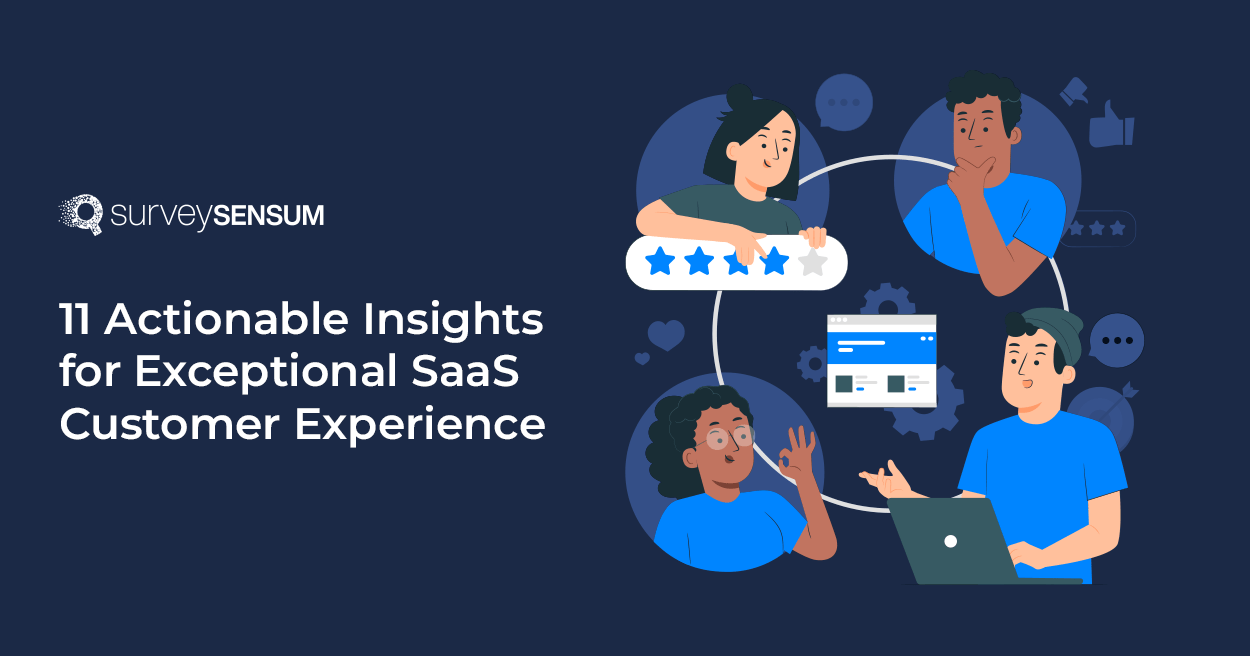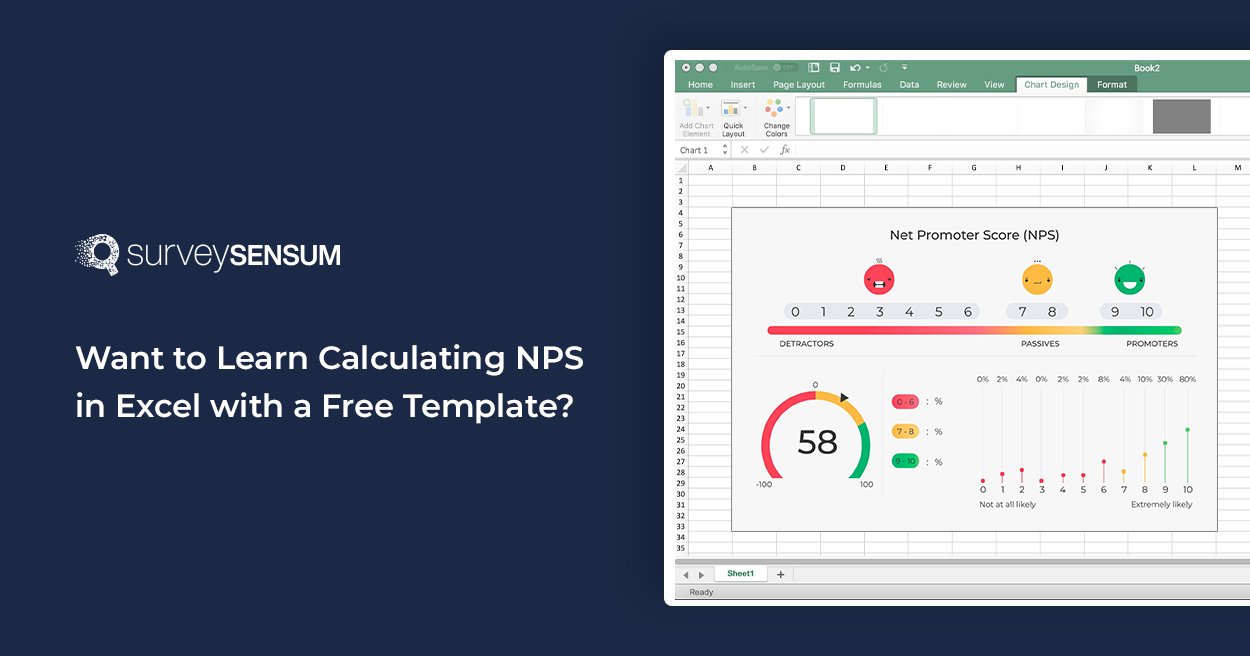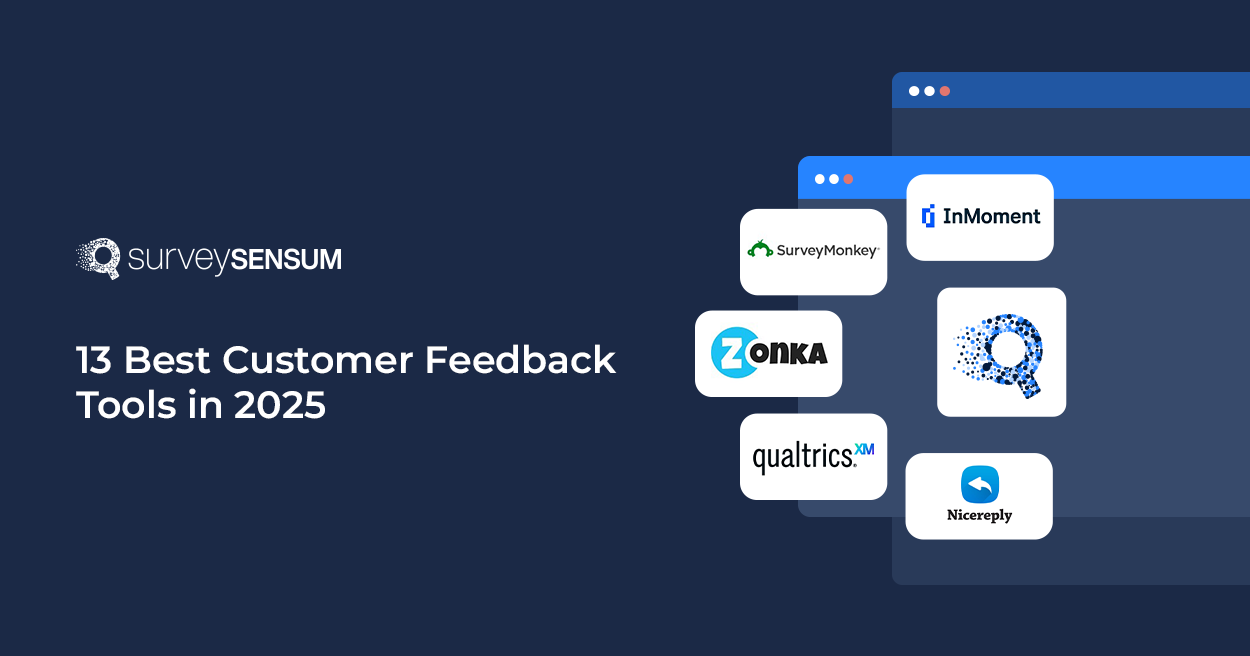
Do you know how exceptional customer experience can transform your SaaS journey?
If not then imagine you found a SaaS product that is super easy to use and integrate. You will continue using it, right? You will also share your positive experiences with your friends and colleagues.
Your customers feel the same way. A positive SaaS experience facilitated by cutting-edge SaaS customer feedback software leads to satisfied, loyal customers who not only stay but also become your advocates. These satisfied users aka promoters enthusiastically recommend your software to others, driving customer acquisition for your business.
By prioritizing an outstanding customer experience, you not only boost SaaS customer retention but also harness the promotional power of your satisfied users, ultimately growing your business.
But what more can an exceptional SaaS customer experience bring to the table?
Dive into this blog to explore 11 actionable insights and uncover the full potential.
11 Actionable Insights for Exceptional SaaS Customer Experience
SaaS customer experience is the holistic perception customers have of your product. It’s not just about their first impression, but the entire customer journey — from the initial interaction to the lasting emotional connection.
Why does this matter? – It matters because it’s not just about making your SaaS product better; it’s about making your brand stand out.
And a great customer experience builds a strong connection between your SaaS and its users, making them loyal fans.
So now that we know how important it is let’s dive into the actionable insights that can help you deliver exceptional customer experience.
1. Know Your Customers and Segment Them
To truly understand your customers and provide them with a tailored SaaS experience, consider a few simple yet effective measures:
- Customer Segmentation and Persona Development: Divide your customers into groups based on their roles, industries, sizes of their businesses, and decision-makers. This will help you address their unique pain points.
- Know What They Expect: Find out what your customers expect from your product. You can do this by asking about their challenges and expectations in the product demonstration or having a call with a sales representative.
- Use In-App Analytics: Set up in-app analytics tools in your SaaS product to see your product performance, your user behavior, preferences, and how much they spend their time on your app.
- Learn Their Goals: Understand customer’s goals and objectives that they want to achieve with your product. This helps you tailor your product according to their needs.
Most importantly, ensure your customers feel heard and valued—ACKNOWLEDGE their ideas and even express personal gratitude for their valuable contributions. That’s how you understand your customers.
2. Must have Seamless Onboarding Processes
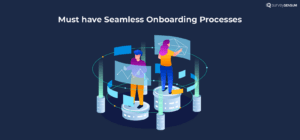
Have you ever thought about how that first experience matters? Surprisingly, 75% of customers might leave due to a complicated onboarding process.
This underscores the importance of providing a personalized onboarding experience to every customer.
Are you wondering HOW to achieve this?
Here you go:
Monitor Customer Effort Score (CES):
Keep an eye on this score to reduce customer effort while onboarding. This score tells you how much effort your customers need to put in during onboarding. Identify and address any pain points that can make their experience bad. Streamline the process to make it as effortless as possible for customers because a lower score indicates smoother onboarding, encouraging customer retention.
Keep it Short and Value-Based Onboarding:
Cut the onboarding steps to focus on what matters most – delivering immediate value. Avoid overwhelming users with too much information or long tutorials. Show them the core benefits of your product. To simply interpret customer behavior and preferences, all you need is efficient ecommerce analytics software. This advanced tool helps SaaS businesses to segment their audience effectively, monitor in real-time, and derive meaningful insights that can enhance overall customer satisfaction.
Enhance the Process with Guided Steps:
Create a step-by-step journey with clear instructions. Use helpful tooltips and interactive guided walkthroughs, tours, tutorials, articles, FAQs, and demos to guide users smoothly. Keep them on track and prevent confusion.
Improve the Process with Onboarding Surveys:
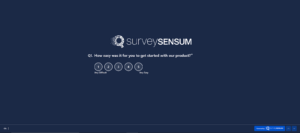
Utilize surveys to gather feedback on the onboarding experience. Ask users about pain points, satisfaction, and areas for improvement. Use survey data to make data-driven enhancements to the onboarding process, continually refining and optimizing it for better user engagement.
By following these strategies, you can create an onboarding experience that keeps users engaged, reduces drop-off rates, and ultimately, leads to satisfied and loyal customers.
Make Your SaaS Onboarding Experience Seamless with SurveySensum – Request a Demo
3. Proactive Customer Support
41% of customers anticipate a response to their support email within six hours, but only a mere 36% of businesses manage to meet that timeline. – Forrester
This shows that simply selling products isn’t enough; customers demand swift and efficient support via chat or email along with the product.
That’s why in SaaS, customer support operates in 3 ways:
1. No-Touch AI Chatbot: This involves automated support through AI chatbots, like Uber’s, which swiftly solve common problems. It’s excellent for simple queries and operates 24/7. But if you have a more complicated issue, you can “raise tickets” for human assistance. For example, health-tech startup SuperDial leverages AI chatbots to automate health insurance verification, saving health providers time and money almost instantly. This is how it combines AI’s speed and efficiency for common issues with human help for the tougher ones, making customer support smoother and more effective.
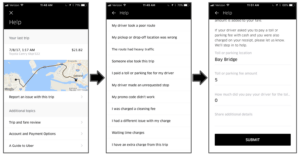
2. AI Plus Human: Platforms like Zomato combine AI assistance with human support. AI handles basic issues, but for complex ones, users can talk to real support agents, ensuring prompt and personalized assistance.
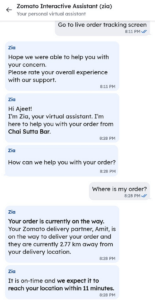
3. Full human support: In this, users receive direct, personalized support from human experts. SurveySensum, for instance, exemplifies this level of support with a remarkable Service Level Agreement (SLA) commitment of just 2 hours. This ensures that any user inquiry or issue receives rapid attention and resolution from human experts, minimizing downtime and elevating the overall user experience.
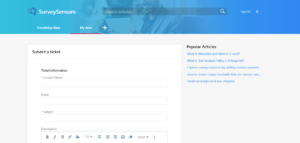
In addition to these support methods, it’s crucial for businesses to create a comprehensive knowledge base with clear, objective responses and offer ticketing options. This ensures timely issue resolution, with a goal of maintaining a turnaround time of less than 24 hours. Beyond this, businesses should:
- Go beyond reactivity by anticipating customer needs for proactive support.
- Empower customers with self-service help for quick issue resolution. 67% of users prefer self-service support, with 91% saying they would use a knowledge base.
- Offer personalized support and build strong relationships through available Customer Success Managers.
- Elevate services by incorporating direct customer support surveys to gather insights.
So, make sure you deliver the best customer service.
4. Build Strong Customer Relationships and Take Feedback CONSISTENTLY
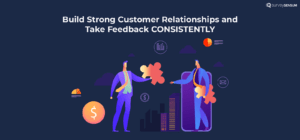
Did you know that 70% of buying choices are swayed by how customers feel they’re treated? It is a lot, right? This shows how much perception matters.
So, how do you make customers feel special? – by building real connections with them. Once you have that connection, you can ask for their feedback, which helps your business grow. Follow these 3 steps:
- Step 1: Collect insights by gathering customer feedback.
- Step 2: Analyze feedback to know and understand your customer’s expectations and experience.
- Step 3: Close the feedback loop by taking necessary action on the customer’s pain points.
That’s not all.
The real magic lies in having personal interactions. Yes, when you connect with your customers personally, they’re more likely to keep coming back. So, create that personal touch by having regular chats with them to keep them connected or send them some surprise emails on their special days like birthdays, anniversaries, etc.
This results in – strong customer relationships, leading to loyal customers.
5. Take One Step Beyond Regular Updates
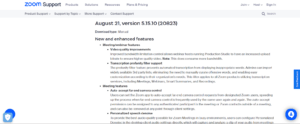
You must have heard about and used the Zoom platform more than once right? But do you know what keeps them unique from other basic video conferencing platforms?
Well, they continuously roll out new features and improvements, responding to user feedback and evolving needs. Just like how they introduced features like Auto-accept far-end camera control, video quality improvements, security enhancements, and more.
This is how they elevate and deliver the best customer experience via feedback.
And guess what? You can make your SaaS (Software as a Service) better too.
How? – By gamification.
You can create an enjoyable setting wherein users not only extract value from your product but also feel a sense of accomplishment in doing so. This grants them a sense of achievement.
So, how can you achieve this?
You can do so by:
- Advancing through Feedback-Driven Enhancements. Actively listen to what they’re saying in the feedback or simply ask them about the features they expect. Then according to the gathered feedback you can take action and launch new products. Take data-driven actions to improve your product constantly. This ensures that your SaaS solution aligns with user expectations and needs.
- Engaging users through personalized communication. Employ daily digests, weekly newsletters, and automated chatbots to acknowledge their milestones and achievements, ensuring a personal touch. This personal touch fosters a stronger connection between your brand and your customers.
- One-on-one chatting. For clients who actively embrace your SaaS workflows, direct conversations through a dedicated CSM. This tailored approach ensures that your most valued users receive the attention and support they deserve.
For example, identify clients who are actively integrating your SaaS solutions into their workflows. After knowing that, you can initiate open-ended surveys to capture their ideas, comments, and specific inquiries. This valuable feedback can be used to integrate desired functionalities into your product, aligning it even more closely with your users’ needs.
In short, go the extra mile by adding value, making it fun, and talking personally with users. And keep a keen ear to user feedback for continuous improvements, ensuring your SaaS offering remains innovative and user-centric.
6. Unite Your Forces to Break Down SILOS
Breaking down silos is crucial for achieving a cohesive CX. To ensure customer experience in SaaS excellence, consider implementing the following strategies:
Prioritize Internal Communication
Effective internal communication is the cornerstone of a unified customer experience strategy. Before diving into automation, prioritize communication within your organization.
For example, inform your marketing team as soon as you receive positive CSAT, NPS, or CES feedback. This transparency fosters a shared understanding of customer sentiment and enables swift action.
Leverage Automation Thoughtfully
While automation is valuable, it should come after establishing strong internal communication. Once your customer success managers (CSMs), customer success operations, and marketing team provide insights and reviews, you can automate repetitive tasks.
For instance, if you receive positive NPS feedback from customers, consider automating the process of sending them links to leave reviews on platforms like G2 or Capterra with a thank you note.
Collaboration Across Multiple Teams
Achieving a cohesive customer experience requires multiple teams working together towards a common goal. Adopt a top-to-bottom approach, where leadership communicates the importance of customer experience excellence to all levels of the organization. This ensures alignment and a shared commitment to delivering outstanding customer experiences.
This is how you can break down silos and deliver exceptional customer experiences.
Elevate Your SaaS Customer Experience with SurveySensum – Request a Demo
7. Set Up KPIs for Measuring Your SaaS Success
When it comes to understanding your customer expectations and experiences, it is vital to choose the right metric and launch them at the right touchpoint.
However, not all metrics are KPIs because KPIs hold the spotlight when it comes to measuring success accurately.
For example, if you want to know how happy your customers are, you use the NPS metric. But just having this metric isn’t enough. The real deal is the score it gives you – that’s the KPI because it is result-oriented. And when you know the result, you can see how well your business is doing.
Now that you understand all KPIs are metrics, but all metrics are not KPIs. So, let’s dive into essential KPIs that provide valuable insights:
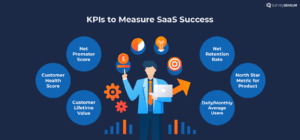
- Net Promoter Score: It measures customer loyalty by asking how likely users are to recommend your SaaS. Higher NPS indicates satisfied customers, essential for delivering the best customer experience.
- Net Retention Rate: It calculates the revenue retained from existing customers, highlighting the success of retaining and expanding your SaaS customer base, a vital part of delivering top-notch customer experiences.
- Customer Health Score: It assesses the overall health and satisfaction of your customers, helping you identify potential issues and opportunities to enhance their experience, ultimately contributing to SaaS success.
- North Star Metric for Product: This metric pinpoints the core value your product delivers to customers. Focusing on it ensures your SaaS consistently caters to users’ most crucial needs, enhancing their overall experience.
- Customer Lifetime Value: It quantifies the long-term value a customer brings to your SaaS. Maximizing this metric involves continuously providing value, which is key to delivering the best customer experience.
- DAU/MAU (Daily/Monthly Average Users): Tracking user engagement through DAU/MAU ratios helps ensure consistent user interaction, a fundamental aspect of delivering an exceptional SaaS customer experience.
This is how KPIs go beyond numbers, offering insights into your business success.
8. Track Product Performance and Goal Achievement with OKRs
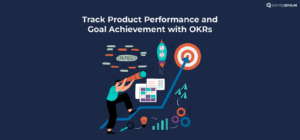
How do you ensure your product not only meets customer needs but also aligns with your business goals?
Aligning your product with customer needs while meeting business goals can be quite a challenge. This is where OKRs come into play. You can use OKRs for setting and tracking goals. Here’s how:
- Monitoring Product Usage: To create an exceptional product, you must understand how people use it. Tools like Mixpanel, BI, and Amplitude can provide these insights. OKRs allow you to set goals for metrics like daily and monthly users, helping you track your progress toward success.
- Aligning with Customer Needs: Keeping customers happy is crucial. OKRs also assist in aligning your product with customer expectations. You can establish goals tied to metrics like NPS, CSAT, or CES to gauge how well your product meets their needs. This approach enables continuous improvement, resulting in happier customers.
By combining usage insights with OKRs, you gain a comprehensive view. This not only enhances your product’s performance but also guides you toward achieving goals that are significant to your customers.
9. Educate Customers about Your SaaS Product
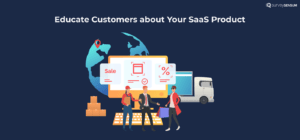
Do you know a whopping 67% of customers prefer self-service over speaking to a company representative?
This underscores the significance of providing resources, webinars, and user guides that empower customers to help themselves. It’s evident that catering to this preference not only enhances the customer experience but also aligns with the evolving expectations of today’s consumers.
Here’s what you can offer:
- Educational Resources: Provide users with a library of resources that elucidate the various aspects of your product. These resources serve as go-to references, helping users navigate their journey effectively.
- Interactive Webinars: Host webinars that provide real-time interaction and guidance. This platform allows users to ask questions, seek clarifications, and gain hands-on insights into using your product.
- Comprehensive User Guides: Craft user-friendly guides that cover everything from basics to advanced features. These guides act as a compass for users, enabling them to navigate complexities with ease.
In short, educating your customers isn’t just about teaching them to use your product – it’s about giving them the tools to succeed. This makes their experience better, reduces frustration, and builds strong relationships.
Elevate Your SaaS Customer Experience with SurveySensum
10. Collaborate with your Customers to Build a Product Community for Discussion
Want to elevate your customer experience SaaS? – Start building a PRODUCT COMMUNITY!
Creating a product community can be a game-changer in taking your customer experience to new heights. Picture it as a vibrant hub where your users gather to discuss, share, and learn about your SaaS product. But that’s not all – it’s also a feedback goldmine for improving your SaaS tool.
That’s wonderful! But how does it work?
Dive in here:
- Foster a Sense of Belonging: Just like belonging to a tight-knit group makes you feel valued, a product community does the same for your users. It’s a place where they know they matter, creating a stronger bond with your brand.
- Create Online Forums: Think of these as the coffee shops of your community, where users can meet, ask questions, and share insights. These forums and threads become knowledge-sharing hubs, empowering users to help each other.
- Harness User Insights: Your customers are your greatest resource for product improvement. By encouraging discussions, you can tap into their collective wisdom. Their feedback and suggestions become invaluable insights that drive product enhancements.
Now, how do you start a great community?
To build a great community start with understanding your users. Find out where they like to hang out online, what tools they enjoy, and what they’re passionate about. This will show you the perfect spot for your community. If they’re big on Facebook, make a Facebook group like Ahrefs. Or use a platform like Circle on your website.
This community-driven approach not only makes users feel part of something bigger but also allows you to gather insights to improve your product. By working together, you create a stronger user bond and contribute to the growth of your product.
11. Make your SaaS Product IRREPLACEABLE
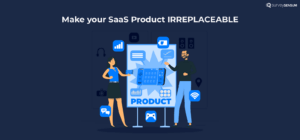
To make your SaaS product irreplaceable, focus on simplicity. Make it so user-friendly that they can’t imagine working without it. This isn’t just about good customer service; it’s about becoming an essential part of their daily work.
Here’s how you can do it:
- Keep It Simple: Make it easy for new users to get started and use your SaaS. Use less-code or no-code adoption so they can quickly understand and use your product.
- Integrate with Everything: Try to integrate your SaaS work with as many other tools as possible. By leveraging native cloud-based app integration or on-premise software through application programming interfaces (APIs), you let your customers’ existing tech stack communicate effortlessly. This integration introduces you as a valued member of their technology family.
- Fantastic Customer Support: Besides technology, provide impeccable customer support. Be there when your customers need help. Solve their problems quickly. Excellent customer support not only helps users navigate your SaaS but also builds trust and loyalty.
This is how you can make your SaaS irreplaceable. By keeping things easy, integrating well, and providing great support, your SaaS product becomes a crucial part of your customers’ operations.
Pro Tip: Impact on the Bottom Line
A great SaaS product doesn’t just have useful features; it’s valuable because it helps you achieve your business’s goals. For example, email marketing software isn’t just good when it creates effective campaigns; it’s exceptional when those campaigns increase your profits and revenue.
The key to an awesome SaaS product is its ability to directly impact your bottom line. This highlights the importance of focusing on REAL OUTCOMES, going beyond just the product’s features.
Wrapping Up!
To enhance SaaS customer experiences, remember the clear link between happy customers and business success. Our insights highlight how a well-crafted customer journey boosts your SaaS offering.
Now, let’s take action. Armed with these strategies, you’re all set to aim for SaaS excellence. Integrate these insights into your SaaS approach for exceptional customer experiences.
For an even more impactful journey, explore SurveySensum – an advanced SaaS customer feedback software. It efficiently gathers, analyzes, and closes the feedback loop, becoming your key to truly understanding and improving customer interactions.






